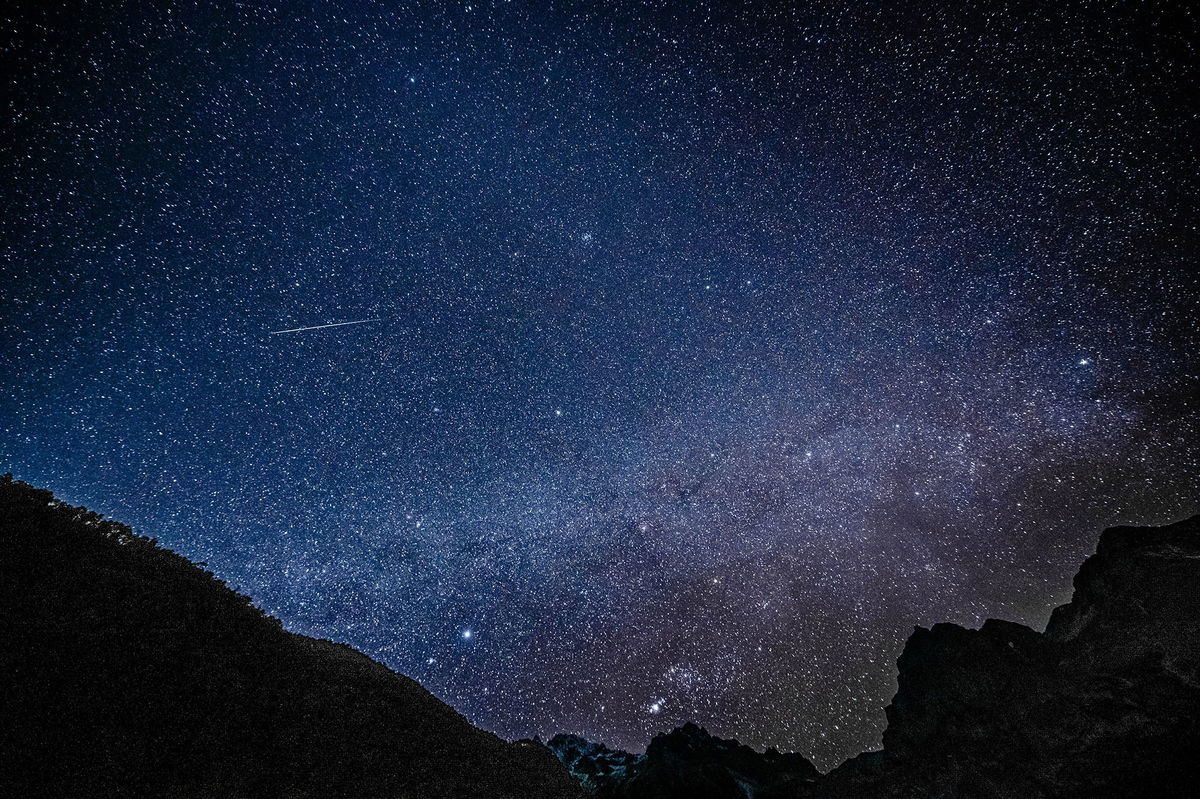The ‘king of the meteor showers’ will peak this week

A Geminid meteor is seen streaking across the sky at the Yulong Snow Mountain in southwest China in 2021. This year
By Taylor Nicioli, CNN
(CNN) — Sky-gazers will soon have the chance to see dozens of meteors streaking across the sky as the yearly Geminid meteor shower reaches its crescendo.
The Geminds are set to peak, or show the most activity, at 2:27 p.m. ET Thursday, according to EarthSky. The best time to view the celestial display will be in the lead-up early that morning between 1 a.m. and 2 a.m. in any time zone, said Robert Lunsford, fireball report coordinator for the American Meteor Society.
In an area with clear viewing conditions and no light interference from a full moon, NASA estimates that the Geminids could offer up to 120 visible meteors per hour, making it the strongest annual meteor shower, or “king of the meteor showers,” as Lunsford called it. During this year’s event, the moon will be 1% full Wednesday night heading into Thursday, according to the society, allowing the meteors to take center stage.
“It all depends on where you’re viewing from. If you’re in the middle of the desert, or on a mountaintop, it’s entirely possible (to see up to 120 meteors). If you’re in your backyard, no,” Lunsford said.
Realistically, a sky-gazer looking up from a backyard after midnight in an area away from light pollution would see an average rate of 60 meteors per hour, he added.
The meteor shower will be visible from anywhere in the world, but those in the Southern Hemisphere will have a shorter viewing period, Lunsford said. That’s because the constellation Gemini — which is the Geminids’ radiant, or area from which meteors appear to originate — will be lower in the sky and is expected to rise only after midnight.
The Geminids: What to expect
Earlier this year, using data from NASA’s ongoing Parker Solar Probe mission, astronomers had found that the Geminid meteors — which are made up of debris from an asteroid named 3200 Phaethon — were most likely created by a violent collision between the asteroid and another space rock or some kind of gaseous explosion, according to a June study published in The Planetary Science Journal. The meteor shower’s first recorded observation was captured in 1862.
Geminid meteors are known to be intensely bright and sometimes colored due to their chemical makeup. Some of these space rocks may have more calcium, sodium or nickel than others, so a meteor in this shower could appear to be orange or yellow, or even green, Lunsford said.
The Geminids have been spotted racing across the sky since November and have appeared to increase in number as Earth approaches the core of the 3200 Phaethon debris cloud. If viewing conditions are obscured by unfavorable weather, the shower will still have high rates a few days before and after the peak, Lunsford said.
“Grab yourself a lawn chair and find the darkest spot on your property and look about halfway up in the sky in a direction that’s avoiding trees or anything, so that you can see almost down to the horizon,” Lunsford said. “And just sit back and enjoy the show. You’ll see Geminid meteors shooting in all directions.”
The next and final major annual meteor shower of 2023 will be the Ursids, which will peak on the night of December 21 through the early morning hours of December 22, according to the American Meteor Society.
The-CNN-Wire
™ & © 2023 Cable News Network, Inc., a Warner Bros. Discovery Company. All rights reserved.